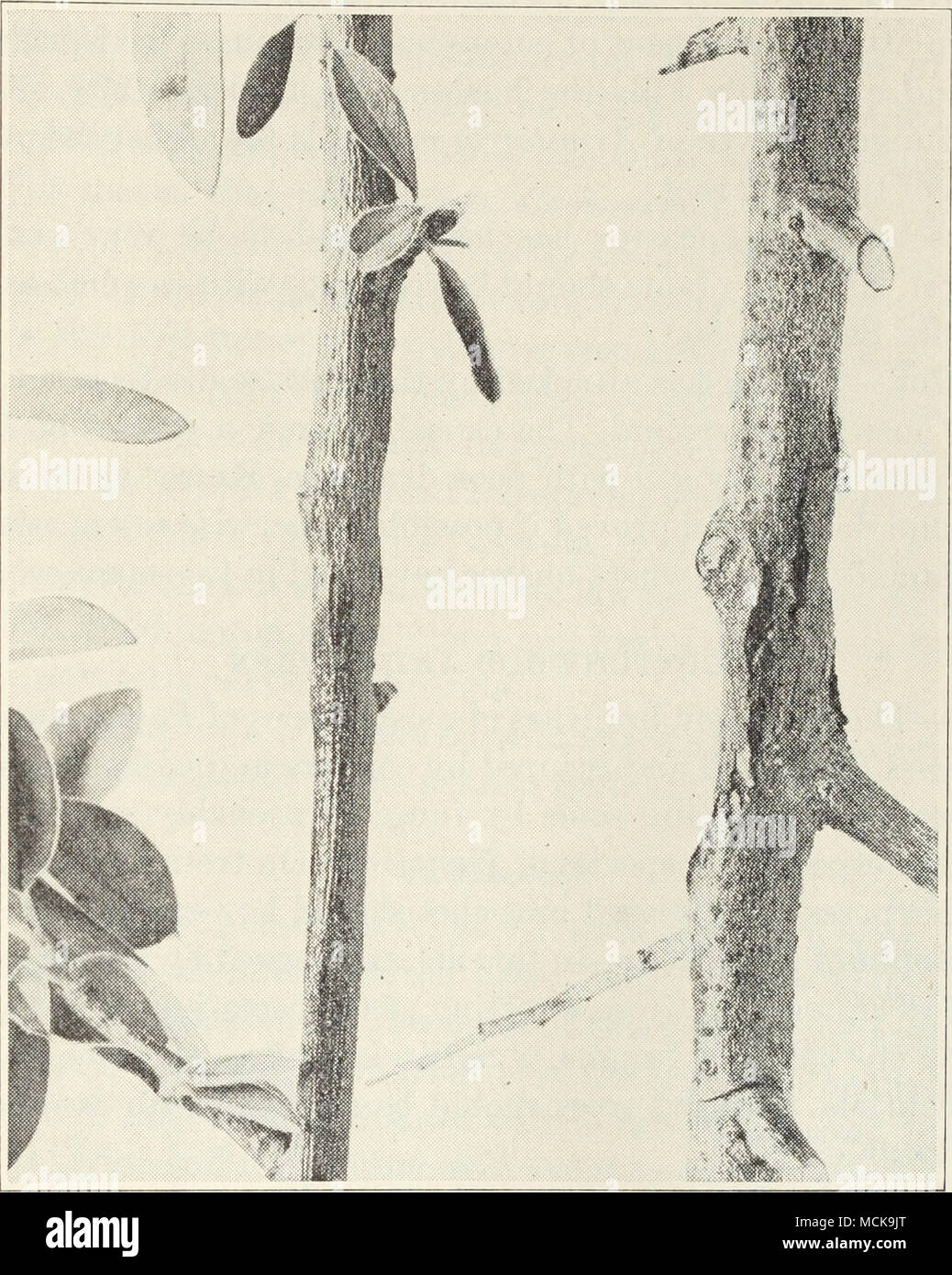. Fig. 4.—Cotoneaster stems with blight cankers. disease on pear and apple. Cankers are formed on the stems (fig. 4). The cause is Erwinia amylovora.4 Diseased parts should be cut off, the cuts being made several inches be- low the affected portion. Cutting tools should frequently be swabbed with a rag saturated with corrosive sublimate 1-1,000 (p. 100). Several species of cotoneaster are highly resistant or immune to blight, such as forms of Cotoneaster buxifolia, C. Franchettii, C. glaucophylla, C. Har- roviana, and C. microphylla. Some of these may be substituted for the 4 For more complete

Image details
Contributor:
The Bookworm Collection / Alamy Stock PhotoImage ID:
MCK9JTFile size:
14.3 MB (892.9 KB Compressed download)Releases:
Model - no | Property - noDo I need a release?Dimensions:
1998 x 2501 px | 16.9 x 21.2 cm | 6.7 x 8.3 inches | 300dpiMore information:
This image is a public domain image, which means either that copyright has expired in the image or the copyright holder has waived their copyright. Alamy charges you a fee for access to the high resolution copy of the image.
This image could have imperfections as it’s either historical or reportage.
. Fig. 4.—Cotoneaster stems with blight cankers. disease on pear and apple. Cankers are formed on the stems (fig. 4). The cause is Erwinia amylovora.4 Diseased parts should be cut off, the cuts being made several inches be- low the affected portion. Cutting tools should frequently be swabbed with a rag saturated with corrosive sublimate 1-1, 000 (p. 100). Several species of cotoneaster are highly resistant or immune to blight, such as forms of Cotoneaster buxifolia, C. Franchettii, C. glaucophylla, C. Har- roviana, and C. microphylla. Some of these may be substituted for the 4 For more complete information see: Thomas, H. E., and P. A. Ark. Fire blight of pears and related fruits. California Agr. Exp. Sta. Bui. 586:1-43. 7 figs. 1934.